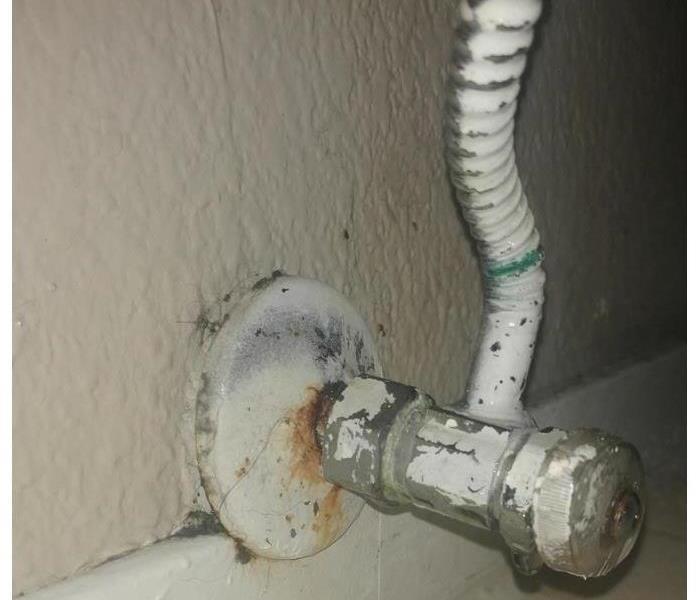When Should I Change the Supply Lines In My Bathroom?
11/5/2022 (Permalink)
When Should I Change the Supply Lines in my Bathroom?
If you're like most people, your bathroom supply lines are one of the least-talked about components of your home. Even though they're out of sight, they're not out of mind! In fact, these plumbing parts are used every day and can be susceptible to leaks as they age over time. Knowing when to replace them can help save you from a lot of headache and money down the road — so let's get started!
The supply lines in your bathroom connect to the main water line and delivers water directly to your faucets. Supply lines are usually located behind the walls or under the sink, but they can also be found inside of a wall or floor.
The materials used to make supply lines vary depending on how they will be used and where they are in your home. Plastic supply lines are typically used inside of walls, while copper or galvanized steel supply lines are often found running from a water meter to a house's exterior.
Supply lines are one of the most neglected components of your bathroom since they're typically located behind the walls or under the sink.
You should still clean and inspect these lines regularly to make sure they remain in good condition. If you notice any signs of wear or damage, you'll want to replace them before there is a leak. This will prevent water damage from flooding parts of your home as well as prevent potential health risks that can come with prolonged exposure to mold and mildew buildup on your supply lines.
Supply lines are used multiple times a day and contain rubber parts that deteriorate over time due to constant exposure to pressurized water temperature changes and chemicals.
You should change the supply lines in your bathroom every few years because they are used every day, multiple times a day and contain rubber parts that deteriorate over time due to constant exposure to pressurized water temperature changes and chemicals. You can prolong the life of your supply lines by installing plastic shut-off valves near each faucet (including tub spouts), installing an anti-scald device at the hot water heater, and keeping cabinet doors closed when not in use.
Leaking supply lines can cause significant damage, so it's important that you understand when they need to be replaced.
When should I replace the supply lines in my bathroom?
- Replace the supply lines in your bathroom as soon as you observe any sign of leaking. Leaking can be caused by several factors, but one thing's for sure: it will lead to significant damage if left unchecked.
- Plastic supply lines are often covered under a 5–8-year warranty, but steel braided ones come with lifetime warranties. Not only that, but they're also less likely to leak than plastic ones—and they look nicer too!
Supply lines should be replaced every 5-8 years or immediately if leaking
If you're like most of us, you use the water in your bathroom every day. You might take a shower or have a bath. Maybe you wash your hands or brush your teeth. You probably drink from the faucet and clean with soap dispensers and liquid hand soaps.
Whatever it is that you do in there, there's no question that demand on the supply lines (the pipes) is very high. The problem is that they contain rubber parts that deteriorate over time—and sometimes fast. If they begin to leak while they still look good, this isn't necessarily an indicator that they need replacing because they may just be going bad prematurely due to age and wear-and-tear factors such as temperature fluctuations or regular use.
Hopefully, this article has been helpful in demystifying the supply line replacement process. There’s no need to be intimidated by it; just follow the guidelines above and you'll be sure to get the job done right.



 24/7 Emergency Service
24/7 Emergency Service
